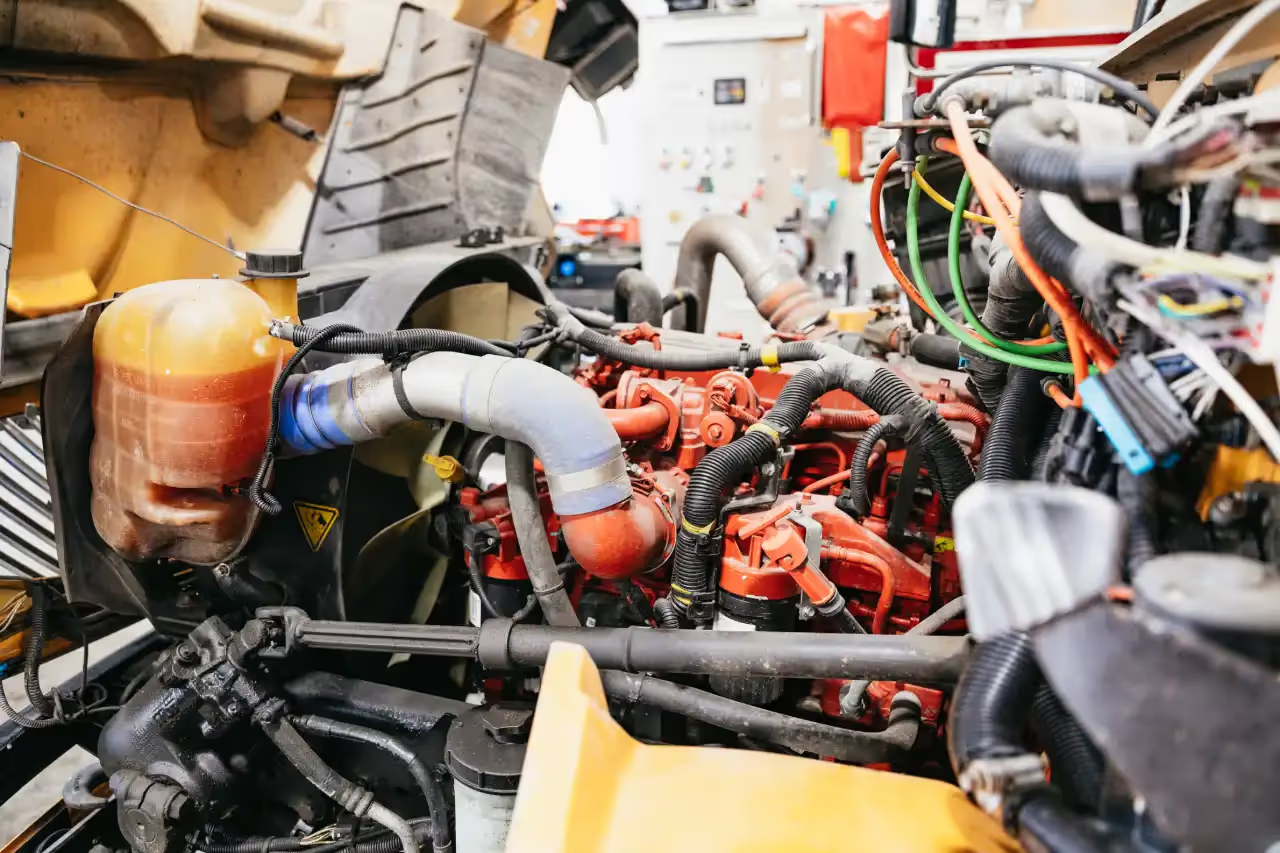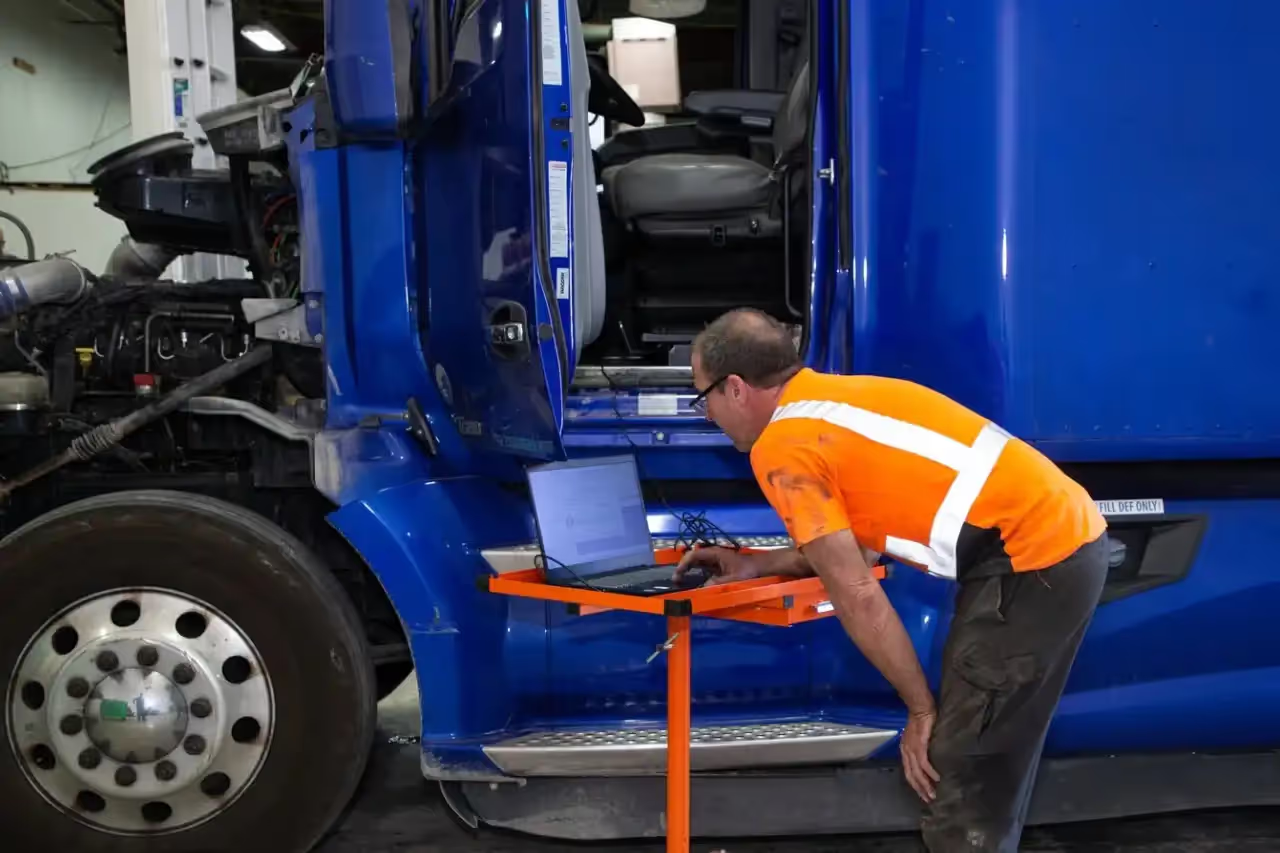Operating in a High-Temperature Corridor
Triple-digit Texas summers, steep on-ramps, and the stop-and-go reality of I-20 traffic make the Dallas–Fort Worth (DFW) freight corridor a torture chamber for gearboxes. Under these conditions, transmission overheating is the primary cause of seal failure, clutch-pack glazing, and unplanned roadside shutdowns. This guide explains where the heat originates, how an auxiliary transmission cooler dissipates it, and the maintenance practices that keep revenue flowing.
Where All That Heat Comes From
Every gear change converts mechanical work into two forms of heat: hydrodynamic shear inside the torque converter and friction between clutch plates. In DFW, both are amplified:
- Torque-converter shear spikes while you climb the steep urban ramps of I-35E.
- Friction heat builds during repeated stoplight launches on I-20.
- Ambient temperature routinely over 100 °F robs the sump of its normal air-cooled temperature differential.
- Heavy payloads of sand and gravel add torque, causing the converter to slip for an extended period.
A mere 40 °C rise in outside air can cut natural convection from the case by one-fifth, accelerating thermal runaway.
Lubricants: Your First Line of Heat Defence
Premium synthetic ATF maintains its viscosity above 260 °F, resists oxidation, and keeps wear debris in suspension, ensuring the hydraulic circuits remain clear.
In manual gearboxes, heavy-duty gear oil supplies a thicker film for spur-gear point loads; when that film thins, metal-to-metal contact quickly leads to spalling and thermal runaway.
What Fails When Temperatures Climb
- Seal hardening & leakage begin around 275 °F as ATF polymerizes internal seals.
- Clutch-pack glazing carbonizes friction material, shortening service life.
- The ECU may trigger a “limp” mode, derating torque and stranding the truck roadside.
How an Auxiliary Cooler Dumps the BTUs
A transmission cooler is a second radiator mounted in the grille, ahead of the A/C condenser. Hot fluid circulates through brazed aluminum plates or fin-and-tube coils, releasing heat to the slipstream before returning to the sump. Isolating gearbox heat from the primary engine-cooling loop prevents the upward spiral described above.
Picking the Right Cooler for Texas Fleets
- Tube-and-fin: Delivers minimal pressure drop, making it ideal for light vocational trucks that frequently dart between job sites.
- Plate-and-fin: Offers the best surface-area-to-weight ratio, making it a smart match for regional-haul tractors that alternate between open highways and urban delivery routes.
- Stacked-plate: Rejects the most heat per square inch, so it belongs on severe-service rigs clawing up the steep grades of the Texas Hill Country.
When ambient air temperature exceeds 95 °F, oversize the cooler by one capacity class to compensate for weak airflow during slow climbs and staging-yard idling.
Installation Best Practices
- Mounting: Place the cooler in front of the condenser so it receives the coldest air.
- Thermostatic bypass: Add a 180°F valve so winter mornings don’t overcool the sump.
- Lines & clamps: Specify SAE J1019 300 °F / 400 psi hose and dual-ear clamps.
- Instrumentation: Fit an inline thermocouple linked to a dash gauge with a 230 °F alarm.
- Redundancy: For off-highway sand pits, twin coolers in parallel reduce pressure loss while doubling capacity.
Day-to-Day Operating Tactics
- Shift-logic tweaks: Program automated manuals for earlier upshifts when GVWR exceeds 80,000 lb so the converter locks sooner.
- Idle-time limits: Auto-shutdown timers curb heat-soak on hot pavement.
- Intelligent routing: Run lighter loads during the high-heat mid-afternoon window.
- Driver coaching: Teach operators to read sump temperature, not just wait for a warning lamp to appear
Preventive-Maintenance Checklist
A disciplined PM routine slashes downtime and warranty grief:
- Check ATF colour and odour every 15,000 miles to catch early oxidation.
- Replace synthetic ATF every 50,000 mi to refresh the additive pack.
- Inspect cooler lines at each PM service for chafing and leaks.
- Calibrate temperature sensors annually to stop gauge drift.
- Blow debris from cooler fins quarterly—Texas grasshoppers are excellent insulators.
These intervals meet FMCSA expectations for vehicles “subject to strict safety and emissions regulations” while saving far more than they cost.
The Business & Compliance Payoff
A single heat-related roadside failure can top USD 12 000 in towing, rebuild labour, and load penalties—far above the price of a heavy-duty stacked-plate cooler and gauge kit. FMCSA also issues out-of-service citations for temperature-triggered derates, hurting your CSA score and customer confidence.
Proactive Heat Management Preserves Profit
DFW’s climate punishes transmissions, but it doesn’t have to punish your balance sheet. Spec the right cooler, monitor sump temperature, and live by your PM calendar. The result: healthier clutches, intact seals, and trucks that stay on the road—and on time.
For a full thermal-performance assessment and custom cooler sizing, reach out to the engineering team at SOS Truck & Trailer Repair in Dallas–Fort Worth.





.svg)

